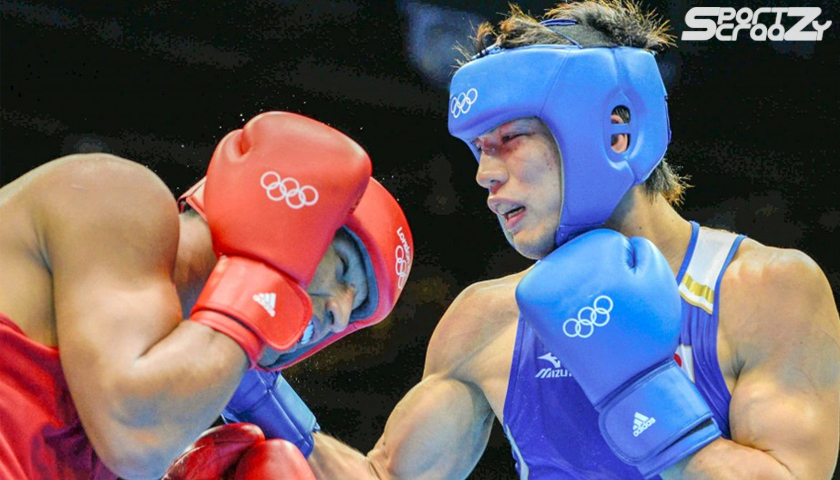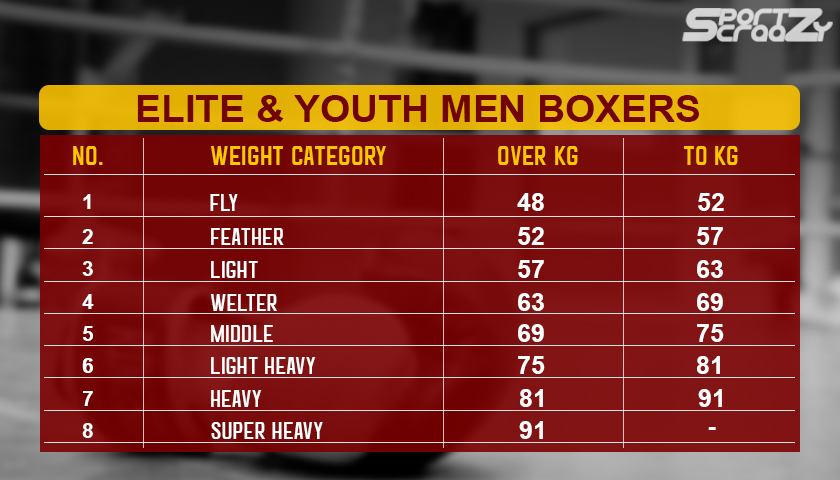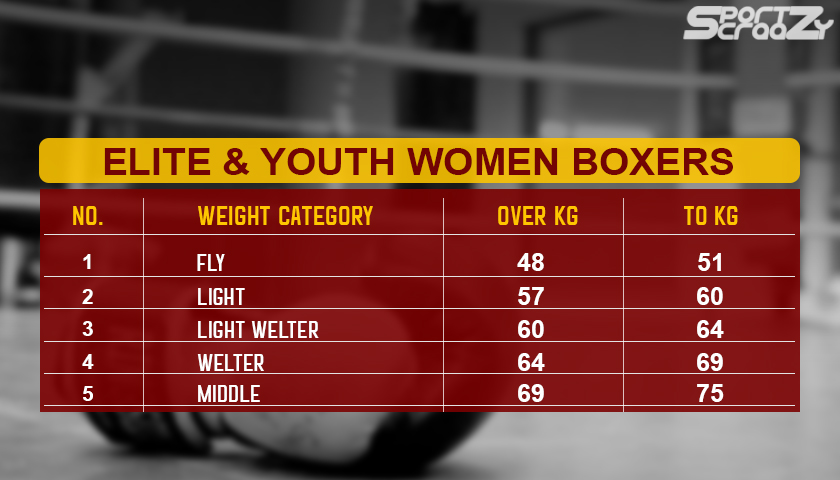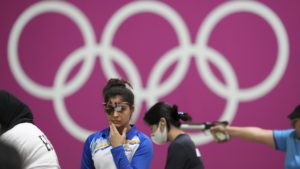Olympic Boxing is widely known as Amateur boxing and every edition of the Summer Olympics sees around 75-80 nations participating and competing in as many as 13 events. Two athletes square up against each other in the boxing ring. The boxer who lands the most number of blows on the opponent boxer within the given rules wins the respective bout. In general, the essence of the sport is “hit and avoid being hit’ to be the winner. The match lasts for three rounds with each round lasting for three minutes.
Boxing at Summer Olympics
Like any other sport in the Summer Olympics, Boxing finds an integral place in the list of the sports played by the participating nations. Out of the 206 nations (expected), competitors from 76 nations will be participating in the upcoming Tokyo 2020 Summer Olympics. Unlike most sports and across a plethora of events, boxing finds a special place in those events with around 8 disciplines in the Elite and Youth Men & Women boxing categories.
Talking about the number of categories n
ext year’s Tokyo Olympics has got to offer, Men’s boxing category will be having eight event programs while women’s boxing sport will have a five-event program. And in the weight divisions, the men’s weight divisions start from 48kg Flyweight category and the highest weight limit will have as much as 91 kg or more in the Super Heavy category.
New Categories added to the women’s category
At the Tokyo 2020, with the vision of achieving a greater number of participation from the female boxers, Tokyo 2020 organizing committee has reduced the men’s events from 10 to 8 and has by pulling out Bantamweight and Light Welterweight categories respectively. Also, men’s featherweight (57 kg) was added and lastly, men’s lightweight has been restructured from 60 kg to 63 kg. For the female boxers, the weight categories added are featherweight (57 kg) and welterweight (69 kg) which is good in addition to the existing flyweight, lightweight and middleweight.
This is how the updated events and weight categories look like:
The decision was approved by the International Boxing Association (AIBA). AIBA has played a vital role in bringing these new changes in order to attract more competitors across the globe.
Qualifying process for Olympics
Unlike most of the sports, there are certain criteria that are considered before the selection of the boxers in the Olympics events. The Olympic hosting nation gets a bit of an advantage over the other nations in almost all the sports as their athletes either gets an automatic place in the events or they get selected in the Olympic qualifying events directly. For the next year’s Summer Games Six places (four men and two women) were reserved for the host nation Japan. When it comes to the qualification of the other nations, Amateur boxers qualify for the big event through competing at their regional tournaments of their countries or at the World qualifying tournament. While the professional boxers qualify through their International rankings which is most unlikely, and by also performing at an international Olympic qualifying tournament.
Point Scoring System Earlier
There has been a major change in the point-scoring since the 2012 London Olympics. Before the Rio Olympics in 2016, A panel of five judges used to be present during the matches who had the authority to decide the point scoring based on their match observations. The judges pressed the buttons when they felt that the boxer had delivered a scoring hit with a marked part of the glove on the opponent’s head or body above the belt. Each point was counted by the electronic scoring system when three or more judges scored a hit within one second of each other. The result of the match was decided on the basis of the total points scored by the pugilists at the end of the bout. Ties were determined first by who took the lead with better style, and if still a tie, by who showed the better defense.
New changes introduced in Point scoring
The International Olympic Association (IOA) along with the AIBA decided to introduce an entirely new point-scoring mechanism for the future Summer Olympic Games. This was mainly done to differentiate between the amateur format (used in the Olympics) and the pro format. The changes brought in was the elimination of headgear and the adoption of the “10-point must” scoring system.
What is a “10-point must” system?
This is the most common point scoring system which is widely used in boxing. The match is as usual split in the rounds with the point-scoring and matches result to be declared by the panel of five judges. To be more precise, after the completion of each round, each judge must award 10 points to the boxer who has been the most dominating in the respective round. A computer randomly selects three of their scores into consideration.
The judging criteria are the number of target-area blows landed, the domination of the bout, technique and tactical superiority, competitiveness, and infringement of the rules. The winner of the round gets 10 points while the losing boxer gets a lower number ranging from six to nine points. After the final round, each judge adds their round scores to determine a winner. In a unanimous decision, all of the judges gave the same boxer two or more rounds. A split decision is taken if there is a disagreement among the judges.
Overview of the rules of Boxing:
- Before beginning the fight, Boxers are supposed to greet each other before and after the completion of the match.
- The male boxers must not have beards and should be clean shaved. There are limitations on keeping the mustaches not exceeding the upper lips.
- The minimum age criteria for participating in the is 19 years old while the maximum age should not be more than 34 years old.
- The boxers should be declared fit before participating in their fights.
- Boxers must need to monitor and manage their weights on a daily basis.
- The equipment (gloves) used by the boxers should meet the standards approved by the AIBA. Gloves weigh 10 ounces and feature a white strip to mark the main hitting area.
- The boxers are told to wear either red or blue color equipment and clothes with one boxing wearing either red/blue color and his/her opponent wearing vice versa.
Olympic Boxing Ring size:
The Olympic boxing platform is a square ring with each side measuring 6.1 meters. Each side of the ring has four ropes that surround the boxing ring. The corners of the ring are distinguished by colors. The corners occupied by the boxers are colored red and blue, and the other two corners, called “neutral” corners, are white. The floor of the ring where the bouts are conducted has a canvas stretched under the surface of the floor.
Other Rules and Regulations:’
Although the aim and rules of boxing are simple, the fighting styles of its competitors are wide-ranging and distinctive. The power-hitting and the most dynamic form of the sport have various rules which need to be followed at the Summer Olympics:
- Fouls- When a boxer inflicts a foul, initially he is served with a warning and if the action repeats again, he/she may be under the scrutiny and may also get disqualified. During the fight, the athlete gets two cautious warnings and if he/she inflicts any foul. The third such warning for the foul leads to disqualification. Hitting below the belt, holding, pressing an arm or elbow into the opponent’s face, forcing the opponent’s head over the ropes, hitting with an open glove, hitting with the inside of the glove and hitting the opponent on the back of the head, neck or body are some forms of the direct fouls while, other actions of foul includes not obeying the referee’s orders, misbehaving with the co-fighter and the referee and trying to hit the opponent immediately after the declaration of the break.
- Down & Out- During the fight when the boxer is down, the referee with an electronic clock counts starts counting from 1 to 10. At that moment, the referee is supposed to signal the counts to the downed boxer with his fingers to keep him/her be in the game. If the boxer is unable to stand up within those 10 seconds, the opponent boxer wins the round on a knockout.
If the boxer is able to stand within those 10 seconds, he/she is still obliged to take a mandatory count till eight as the referee makes sure that the downed boxer is able to stand and continue the fight or not. If the boxer gets to his feet but falls again without receiving another blow, the referee starts counting at eight. If the boxer takes three or four counts when downed within one round, the referee has the authority to stop the fight and can declare the other boxer the winner of that round. And if the same thing happens in the second and the third round, the judges’ point tallies up to that time determine the winner. If both the boxers go down at the same time, the counting continues until one of the boxers stands up. And if none of the boxers are able to stand up in the 10 seconds countdown, the boxer with the most points in that particular round is declared the winner. - Other Factors- The other ways a boxer may be declared the winner during the bout can be due to the various cases: When one of the fighters has been warned with multiple warnings and gets disqualified. If one of the opponents withdraws or surrenders the fight due to any reason. Boxing matches continue until the opponent concedes or loses consciousness. The referee can immediately disqualify the unnecessarily brutal boxer thereby, declaring the other boxer the winner.









